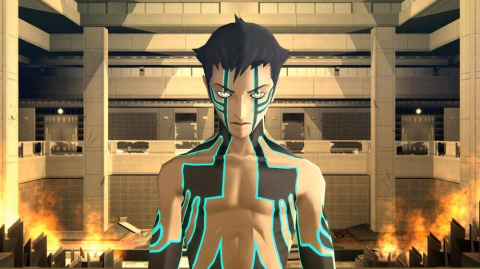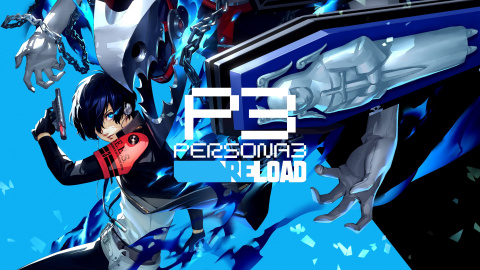Game news How This Game Saved Its Company From Bankruptcy To Become The Modern RPG Phenomenon (And No, It’s Not Final Fantasy)
On February 2, Persona 3 Reload is released, one of the most anticipated games of the beginning of the year. It must be said that since the launch of Persona 5, the franchise has established itself as one of the benchmarks for modern role-playing games. And yet, this phenomenon almost never saw the light of day.
2024 will be a big year for Atlus. From the month of February, the Japanese publisher starts strong with the release of Persona 3 Reload, remake of Persona 3 with Unreal Engine 5 for rendering in the vein of Persona 5, the game behind the franchise’s recent popularity. A little later, this fall, we will finally be able to play Metaphor: ReFantazio, the new project from the creators of Persona 3, 4 and 5 teased since 2016.
With all these titles planned, we can say that Atlus is doing very well, so much so that Persona is now one of the major modern franchises of SEGA, owner of the studio, alongside Yakuza/Like a Dragon. And yet, Atlus wouldn’t be where it is today if a radical decision hadn’t been made 20 years ago for a game that changed everything for the company: Persona 3.
Pre-order Persona 3 Reload at Amazon
Before Persona, there was Shin Megami Tensei
With the success of Persona 5, you have probably become interested in the series as a whole. And when we look closer, you have surely noticed that there is a real dichotomy within the Persona saga between the first two episodes and the last three. Initially, Persona is a sub-series of the prolific Shin Megami Tensei (SMT) franchise. These are role-playing games with turn-based combat that always feature the same bestiary of demons from different mythologies from around the world. All this often takes place in a dark atmosphere with esoteric and occult themes.
To stand out from other series in the franchise, Persona has the particularity of featuring high school students in a school setting and adopting a more anime aesthetic, and this, since its origins. If the first episode really recalls SMT by its dungeon-crawler nature, the second begins to stand out by the structure of its dungeons. Apart from this originality, it must be recognized that‘at its beginnings, the series remains very close to the SMT formula. In other words, we are rather facing a new variation within a niche franchise, which does not help its democratization. However, it is with Persona 3 that things will change thanks to the insistence of one man: Katsura Hashino.
Katsura Hashino, strongman of Atlus?
Arriving at Atlus in 1994, Katsura Hashino immediately worked on several SMT projects in important roles, namely that of Game Designer on Shin Megami Tensei If…, Devil Summoner and its sequel Soul Hackers. In other words, major titles for the franchise. Building on this success, Hashino is promoted to the rank of Director and Supervisor on a major project: the third numbered episode of the main series, namely Shin Megami Tensei: Lucifer’s Call. A game that will experience great success at the licensing level, to the point of being entitled to a remaster in 2021 which will reach half a million sales.

Despite this success, Atlus is not doing well in the 2000s. To be more precise, it was not so much Atlus as INDEX, its parent company, which was threatened with closure before being bought by SEGA in 2013. In the context of the time, Katsura Hashino was chosen to develop the third episode of Persona. When we look at his career, this decision makes sense because SMT If… on which he worked as Game Designer was a proto-Persona. By the time the designer found himself at the helm of the project, Atlus was on the verge of collapse and he learned that Persona 3 might well be the company’s last game. A situation which is reminiscent of that of the creation of the first Final Fantasy. To prevent this from happening, he decides to make the franchise more appealing, which won’t be to everyone’s taste.
Speaking on J-Wave radio Persona 3, 4 & 5 Director Katsura Hashino said that at the time of Persona 3 Atlus were about to collapse and he was told it would be their last game. He said they had to broaden the series’ appeal with P3 otherwise the company would disappear. #Persona3 pic.twitter.com/zsgYEQoORD
— Genki✨ (@Genki_JPN) August 29, 2023
During an interview last year with J-Wave radio, Katsura Hashino said that before starting the development of Persona 3, he first deeply analyzed and dissected the previous games, whether in terms of systems, decor or themes, to propose a new formula to the management team. And that doesn’t matter to the creators of the franchise. He says he had a lot of trouble convincing some veterans of the company who found his proposal too different from the foundations of the series. Faced with this, Hashino responds that this change is necessary for the license to attract new players and that it does not only speak to fans. Otherwise, at this rate, the company would disappear. After long negotiations and given the urgency of the situation, these senior executives finally accepted Hashino’s proposal, who concluded by saying: “This is what the Persona series will become. It’s going to be okay, forgive me.“
Persona 3, the game that saved Atlus?

Thus, Persona 3 disrupts the classic Persona structure at every level. The most important point of this overhaul concerns the visual novel and dating simulator aspect which is now part of the identity of the series. Concretely, the emphasis was placed on the dialogues, the characters and the relationships that the player maintains with them and which evolve over time, in particular thanks to their social skills. In addition, the player must manage the daily life of a high school student between classes, free time, odd jobs and dungeons to explore, which radically changes from previous games. The experience therefore becomes much more talkative, but this creates a strong feeling of attachment to the characters, a central element of the popularity of the series.
It must be said that this is partly due to the work of Shigenori Soejima, a genius Character Designer, for whom this was one of the first projects as Art Director. For the occasion, the latter goes even further in the anime aesthetic to appeal to a teenage audience, while retaining a dark dimension specific to SMT. Same thing for the compositions of Shoji Meguro whose funky tones at the crossroads of all genres will become an important part of the identity and popularity of the series over time.

Result, Persona 3 becomes a solid basic formula for the franchise which will be perfected with the following episode Persona 4, leading to the phenomenon Persona 5 which has now sold more than 10 million copies. Building on this success, Atlus wanted to ride on the popularity of the franchise by developing numerous spin-offs at P5 (Strikers, Dancing, Tactica…), but also by re-releasing 3 and 4 on modern consoles. From now on, Persona is better known than its parent series, Shin Megami Tensei, which simultaneously benefits from this exposure. Today, it’s Persona 3’s turn to be put back in the spotlight with Reload, its remake, which allows as many people as possible to discover this gem in more modern conditions.
This page contains affiliate links to certain products that JV has selected for you. Each purchase you make by clicking on one of these links will not cost you more, but the e-merchant will pay us a commission. The prices indicated in the article are those offered by the merchant sites at the time of publication of the article and these prices are likely to vary at the sole discretion of the merchant site without JV being informed.
Learn more.
